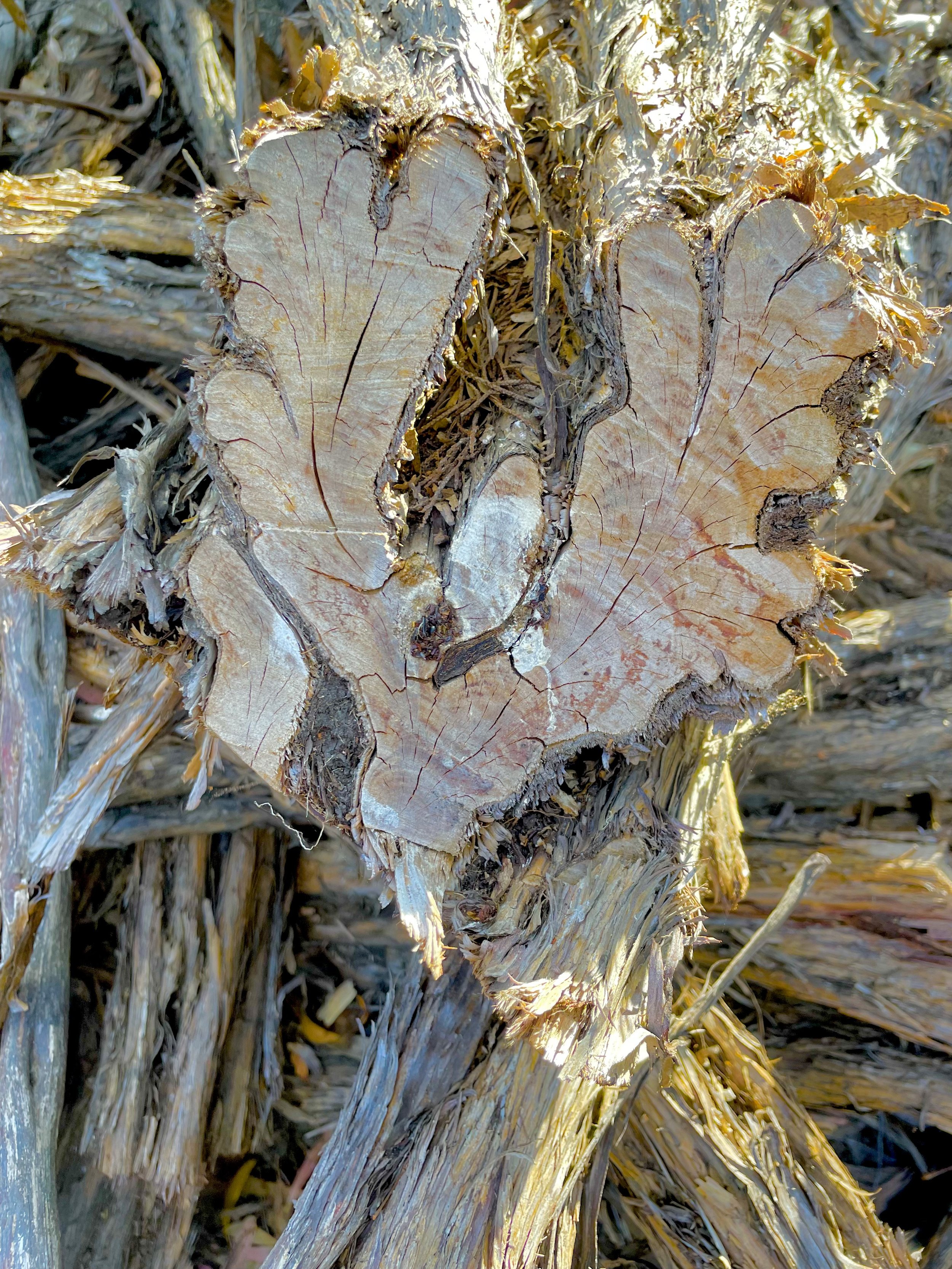Coast Ti Tree
Coast Ti Tree- Leptospermum laevigatum , Lorne Foreshore, Victoria, AUSTRALIA
Notes from artist in residence @
Lorne Community Connect Art Precinct
The felled timber of an invasive coast ti tree, Leptospermum laevigatum was collected by Lorne local Simone Fulton, from along the Lorne Foreshore and Erskine river mouth. The Lorne Habitat Restoration plan actioned by Great Ocean Road Coast and Parks Authority, (GORCPA) has implemented weed preventative and control measures removing selected coast ti tree along the riverbank and foreshore, planting endemic river reeds and shrubs in its place.
Simone Fulton is interested in using the felled timbers in a community led art project at the Lorne Community Connect Art Precinct accessing the Artist in Residence to activate community conversations around this very beautiful and admired tree, now deemed to be invasive in selected areas.
We have been visiting the areas along the Lorne Foreshore and Erskine river banks where the timber has been removed. We have also been visiting the sites where the felled timber is now stored.
loose map of south west victorian coast across 2 bioregions in relationshoip to where coast ti tree is seen as endemic and a weed
Fun fact drop via GORCPA website
GORCPA are currently managing coastal Crown land that extends across two bioregions – Otway Plain and Otway Ranges. This is a significant definition in understanding the reason for removal of the coast tea tree in Lorne.
Bioregions are a landscape-scale approach to classifying the environment using different attributes such as climate, geology, soils and vegetation.
GORCPA acknowledge and respect the separate and distinct Eastern Maar and Wadawurrung Peoples as the Traditional Owners of the Great Ocean Road’s land, waters, seas and skies and acknowledge their cultural knowledge that has led to sustainable practices and has cared for Country over tens of thousands of years.
References



